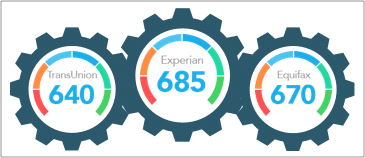Everyone needs a budget, and every budget starts with a clear picture of how you spend your money. Tracking your expenses may seem tedious at first, but it’s less difficult than it sounds and it’s the first step toward getting your finances under control.
Here are 13 basic but important steps to help you track your monthly expenses.
How to Track Expenses
Tracking expenses will consume some time, but once you’re used to it it becomes surprisingly easy. Follow these simple steps:
- Choose a method. Start by deciding how you’re going to record your spending. You may decide to record your expenses in a spreadsheet, or even to write them in a notebook. Any of these methods will work.
You may also decide to use a budgeting app, like Mint or You Need a Budget. These apps can help you better track your budget by handling all the major organizing and calculating for you, so all you need to do is enter your information.
Choose whatever makes you feel most comfortable.
- List your recurring expenses. These are monthly bills like rent, utilities, insurance, debt payments, credit card payments, subscriptions or memberships. Some of these may vary from month to month, but an estimate of your average monthly spending for each category is all you need at this point.
- Subtract your recurring expenses from your take-home income. That gives you a figure for your disposable income: the money you can choose how to spend.
- Set up categories for your spending: Use categories like food, groceries, entertainment, transportation, miscellaneous and whatever else you need. You can change the categories as you record your expenses: that’s ok, it’s part of learning to understand your current spending patterns.
- Record everything you spend: That means everything. At this stage, you want detail. Don’t just write “food” or “groceries”… write down everything you bought and how much you paid for it, item by item. Saving receipts will help. Place each expense in the appropriate category. Note how you paid for it: cash, debit card or credit card.
- Keep tracking. Continue this process of detailed recording for at least a month. Two to three months is even better. When you have a detailed record of how you spent your money over several months, you will already have learned a good deal about your spending. You’ll also have the information you need to make some important decisions.
- Look for hidden expenses. Check your bank and credit card statements for any recurring charges you may have forgotten: you can’t track money if you don’t know you’re spending it. Be sure to include any e-wallet or online payment systems. Many people are still paying charges for memberships or subscriptions that they forgot long ago. That money adds up. Find these expenses and either record them or eliminate them.
- Organize your data. You should do this continuously as you record your expenses. Keep looking at your records and your spending and see if you need to reorganize your categories to better fit your actual spending patterns. It may help to note expenses that you think you could cut and those you consider essential.
Now you have an expense tracking system and you have enough basic information to show you where your money really goes. It’s time to start putting that information to good use!
Use What You’ve Learned
If you have tracked your spending for a month or more you probably know more about how you spend money than most Americans. To make the most of that knowledge you’ll need to look closely at the information you’ve accumulated. Add these 5 steps to your list!
- Look for unnecessary expenses. Almost everyone who tracks their spending finds areas where they’re spending more than they ever realized. Assess the amount you actually spend and decide whether it’s worth it. There’s nothing wrong with deciding that the daily latte at the upscale coffee shop or that expensive imported cheese is an allowable luxury, but you should base your decision on a full understanding of what that luxury actually adds up to.
- Eliminate recurring expenses that you don’t need. Do you have a gym membership that you don’t use? Subscriptions to magazines that you don’t read? Consider dropping them.
- Build a reality-based budget. You can’t budget effectively until you know where you are actually spending money. Look at how you’ve been spending money, decide how you want to spend money and set your budget accordingly. Remember savings and an emergency fund! If you find that you don’t have enough in your income to cover everything you want in your budget, look for expenses that you can cut or reduce.
- Follow your budget, and keep recording! You may want to tweak your recording system as you get more practice using it, but don’t stop tracking your expenses. Expense tracking will tell you how well you’re following your budget and how you might need to change it!
- Evaluate the ways you spend. If you’re carrying a credit card balance you may want to reduce the spending on your card until you pay that balance off. Look for card expenses that you could pay in cash. If you spend a lot in certain categories, you might want to consider a card that rewards that spending. The more you learn about your spending the more you can fine-tune your methods.
Budgeting and expense tracking are not fixed processes. As you earn more and your spending gets more complex, you may want to use new and better ways to track your spending. You may decide to use an app, or upgrade your app. Change your method if you need to, but don’t stop following a budget and don’t stop tracking your spending!
Conclusion
Expense tracking is the basis for every budget, and effective budgeting is the first step to taking full control of your financial life. Tracking your expenses is not difficult to do. If you follow a few basic steps you’ll soon have a clear picture of your spending and what you can do to help you reduce it!




